
IEEE Geoscience and Remote Sensing Letters
metrics 2024
Connecting Research and Technology in Earth Sciences
Introduction
IEEE Geoscience and Remote Sensing Letters is a distinguished journal published by the IEEE-INST ELECTRICAL ELECTRONICS ENGINEERS INC, focusing on the cutting-edge realms of geoscience and remote sensing. Since its inception in 2004, the journal has maintained a significant role within its field, achieving a robust impact factor that places it in the Q1 category for both Electrical and Electronic Engineering and Geotechnical Engineering and Engineering Geology, reflecting its high-quality research output and influence. The journal is highly ranked in Scopus, securing the 35th position in Earth and Planetary Sciences and the 154th position in Engineering, showcasing its broad academic reach and engagement with current advancements in technology and earth sciences. Although the journal is not open access, it remains accessible to a wide readership, fostering an environment for innovation and knowledge sharing among researchers, professionals, and students interested in remote sensing technologies and geosciences. With its objective to publish concise articles that present significant results and advancements, IEEE Geoscience and Remote Sensing Letters continues to be a vital resource for anyone engaged in these dynamic fields.
Metrics 2024
 1.25
1.25 4.00
4.00 4.40
4.40 149
149Metrics History
Rank 2024
Scopus
IF (Web Of Science)
JCI (Web Of Science)
Quartile History
Similar Journals

ISPRS International Journal of Geo-Information
Transforming spatial data into actionable insights.ISPRS International Journal of Geo-Information, published by MDPI, stands at the forefront of the field of geospatial sciences, contributing valuable knowledge and research insights since its inception in 2012. This open access journal, which boasts an impressive collection of articles that emphasize the integration of geographic information systems (GIS) in Earth and planetary sciences, currently achieves a remarkable standing, with a 2023 impact factor ranking in the Q1 category for both Earth and Planetary Sciences and Geography, Planning and Development. Researchers and professionals engaged in the study of spatial data, remote sensing, and innovative geoinformation technologies will find the journal an essential resource, offering diverse perspectives and methodologies. With its open access model, the journal aims to promote the dissemination of knowledge globally, fostering collaboration among scholars while pushing the boundaries of research in geoinformation disciplines. The journal is based in Switzerland and is well-positioned to contribute significantly to the understanding and application of geospatial data for societal advancements.
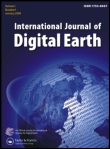
International Journal of Digital Earth
Advancing geoscience through digital innovation.Welcome to the International Journal of Digital Earth, a premier open-access journal published by Taylor & Francis Ltd, dedicated to advancing the field of digital geoscience. With its ISSN 1753-8947 and E-ISSN 1753-8955, this journal has established itself as a vital resource for scholars and practitioners alike since its inception in 2008. The journal is at the forefront of interdisciplinary research, showcasing a diverse scope from Earth sciences to computer science applications, evidenced by its impressive ranking in the 2023 Scopus database. It holds a Q1 categorization in Earth and Planetary Sciences, with a percentile rank among the top 16% of its peers, and also stands out in the Q2 quartile for both Computer Science Applications and Software disciplines. The journal's commitment to open access, established in 2022, underscores its dedication to disseminating knowledge and fostering collaboration. By providing a platform for high-quality research, the International Journal of Digital Earth plays a critical role in addressing the complexities of our changing planet through innovative digital solutions. Whether you are an experienced researcher or a student, this journal is an essential addition to your academic toolkit.
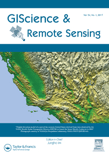
GIScience & Remote Sensing
Elevating Research in Remote Sensing and GIScienceGIScience & Remote Sensing, published by Taylor & Francis Ltd, stands as a leading journal in the realm of Earth and Planetary Sciences, holding a prestigious Q1 ranking. Since its transition to Open Access in 2022, the journal has significantly broadened its reach, enabling researchers, professionals, and students across the globe to disseminate and access cutting-edge research related to geographic information science and remote sensing technologies. With a focus on publishing high-quality, peer-reviewed articles that contribute to the understanding of the Earth’s processes, environments, and interactions, this journal not only supports advancements in scientific knowledge but also fosters interdisciplinary collaboration. Based in the United Kingdom, GIScience & Remote Sensing continues to pave the way for innovative methodologies and applications, solidifying its vital role within the scientific community.

STUDIA GEOPHYSICA ET GEODAETICA
Shaping the Future of Geophysical Knowledge Since 1957STUDIA GEOPHYSICA ET GEODAETICA, published by Springer, is a prestigious scientific journal that has been at the forefront of the fields of Geochemistry, Petrology, and Geophysics since its inception in 1957. With an ISSN of 0039-3169 and an E-ISSN of 1573-1626, the journal serves as a vital platform for disseminating original research and reviews that enhance our understanding of the Earth’s processes. Situated in the Netherlands, the journal is indexed in notable databases, holding a respectable Tier Q3 ranking in both Geochemistry and Petrology, as well as Geophysics, based on the 2023 metrics. With its commitment to academic rigor, the journal seeks to engage a diverse audience of researchers, professionals, and students, facilitating vital discourse and advancements in Earth sciences. Although it does not currently offer open access options, it remains a significant resource for those aiming to contribute to or further their knowledge within these critical disciplines.
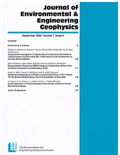
JOURNAL OF ENVIRONMENTAL AND ENGINEERING GEOPHYSICS
Shaping the Future of Geophysics and Environmental SolutionsJOURNAL OF ENVIRONMENTAL AND ENGINEERING GEOPHYSICS, published by the ENVIRONMENTAL ENGINEERING GEOPHYSICAL SOC, serves as an essential platform for the dissemination of cutting-edge research in the interconnected fields of environmental engineering, geophysics, and geotechnical engineering. This journal, with the ISSN 1083-1363 and E-ISSN 1943-2658, boasts a solid reputation, reflected in its Q3 rankings in several categories as of 2023. As it converged from 2001 to 2024, the journal has evolved to meet the increasing demand for innovative solutions to contemporary environmental challenges. Researchers are encouraged to submit original articles that contribute meaningfully to our understanding of the subsurface environment and its engineering implications. The journal is indexed in Scopus, with commendable rankings including 72nd out of 165 in Geophysics, highlighting its role in advancing knowledge and application in Earth and Planetary Sciences. Although not an open access journal, subscribers and institutions alike recognize the value of its rigorous peer-reviewed content, ensuring that professionals and scholars are equipped with the latest findings and methodologies in this dynamic field.
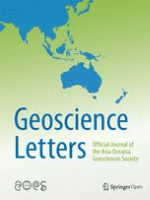
Geoscience Letters
Connecting Discoveries to Real-World SolutionsGeoscience Letters, published by Springer, is a prominent open-access journal in the field of Earth and Planetary Sciences, recognized for its dedication to advancing knowledge and research in this vital area of study. With a reported impact factor that reflects its esteemed position—ranking in the Q1 quartile of Earth and Planetary Sciences, particularly as the journal ranks #48 out of 195 in the general category according to Scopus—the journal serves as a vital resource for researchers, professionals, and students. Since its inception in 2014, Geoscience Letters has facilitated the dissemination of high-quality research and critical insights, aiming to bridge the gap between scientific discovery and societal needs. Its commitment to open access ensures that the latest findings are readily available to a global audience, thus enhancing collaboration and innovation within the geosciences community.
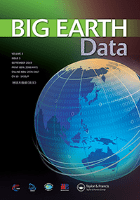
Big Earth Data
Unleashing the Power of Big Data for a Sustainable PlanetBig Earth Data is a prestigious open-access journal that has been at the forefront of advancing research in the intersection of earth science and computer technology since its inception in 2017. Published by TAYLOR & FRANCIS LTD in the United Kingdom, this journal is dedicated to disseminating groundbreaking findings and innovative methodologies in the fields of Earth and Planetary Sciences and Computer Science Applications. With a commendable impact factor and an impressive positioning in the Scopus rankings—claiming Q1 status in Computers in Earth Sciences and Q2 in Computer Science Applications—it serves as a vital resource for researchers, professionals, and students alike. The journal encourages submissions that explore the integration of big data technologies in managing, analyzing, and visualizing earth-related data, thereby fostering interdisciplinary collaboration. Since embracing its open-access model, Big Earth Data has enhanced the accessibility of high-quality research, promoting a broader dialogue in the scientific community and contributing to informed decision-making in global environmental challenges.

Geophysics and Geophysical Exploration
Illuminating the Subsurface: A Hub for Geophysical DiscoveriesGeophysics and Geophysical Exploration is a prestigious journal dedicated to advancing the fields of geophysics and geophysical exploration. Published by the Korean Society of Earth & Exploration Geophysicists, this journal serves as a vital platform for researchers, professionals, and students to share innovative findings and developments in geophysical methods and technologies. The journal covers a broad range of topics including but not limited to seismic analysis, subsurface modeling, and remote sensing techniques, aimed at addressing the complex challenges in Earth science exploration. Although it does not currently offer open access options, the journal maintains rigorous peer-review standards, ensuring high-quality and impactful research contributions. With its commitment to fostering knowledge exchange in the geophysical community, Geophysics and Geophysical Exploration plays a critical role in enhancing our understanding of the Earth, making it an essential resource for those interested in geoscience and related fields.

IMAGE AND VISION COMPUTING
Illuminating the path of progress in image analysis and recognition.Image and Vision Computing, published by Elsevier, serves as a leading international journal focused on the dynamic fields of computer vision, pattern recognition, and signal processing. With its esteemed Q1 category rankings in these areas and an impressive standing in Scopus metrics, where it ranks 19th in Computer Vision and 23rd in Signal Processing, this journal has firmly positioned itself at the forefront of academic research and innovation. Established in 1983, it continues to publish cutting-edge research that drives advancements in technology and applications across various domains. The journal is committed to disseminating high-quality, peer-reviewed articles that address significant challenges and propose novel solutions, making it an essential resource for researchers, practitioners, and students alike. While not an open access journal, Image and Vision Computing offers a wealth of valuable insights into the ever-evolving landscape of visual computing technologies.
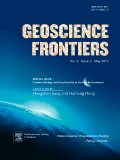
Geoscience Frontiers
Advancing Earth Sciences Through Open AccessGeoscience Frontiers is a premier open-access journal that has been at the forefront of disseminating impactful research in the field of Earth and Planetary Sciences since its inception in 2010. Published by China University of Geosciences, Beijing, this journal operates from the Netherlands and has gained recognition for its rigorous peer-review process and high standards of scholarship, earning a distinguished position as Q1 in the Earth and Planetary Sciences category. With a Scopus ranking of 5 out of 195, placing it in the 97th percentile, it reflects the journal's commitment to addressing global geological challenges and advancing our understanding of the Earth’s dynamic systems. As an open-access platform, Geoscience Frontiers ensures that vital research is widely accessible, fostering collaboration and innovation among researchers, professionals, and students alike. By providing a forum for cutting-edge discoveries and theories, the journal plays a critical role in shaping the future of geoscientific research and education.